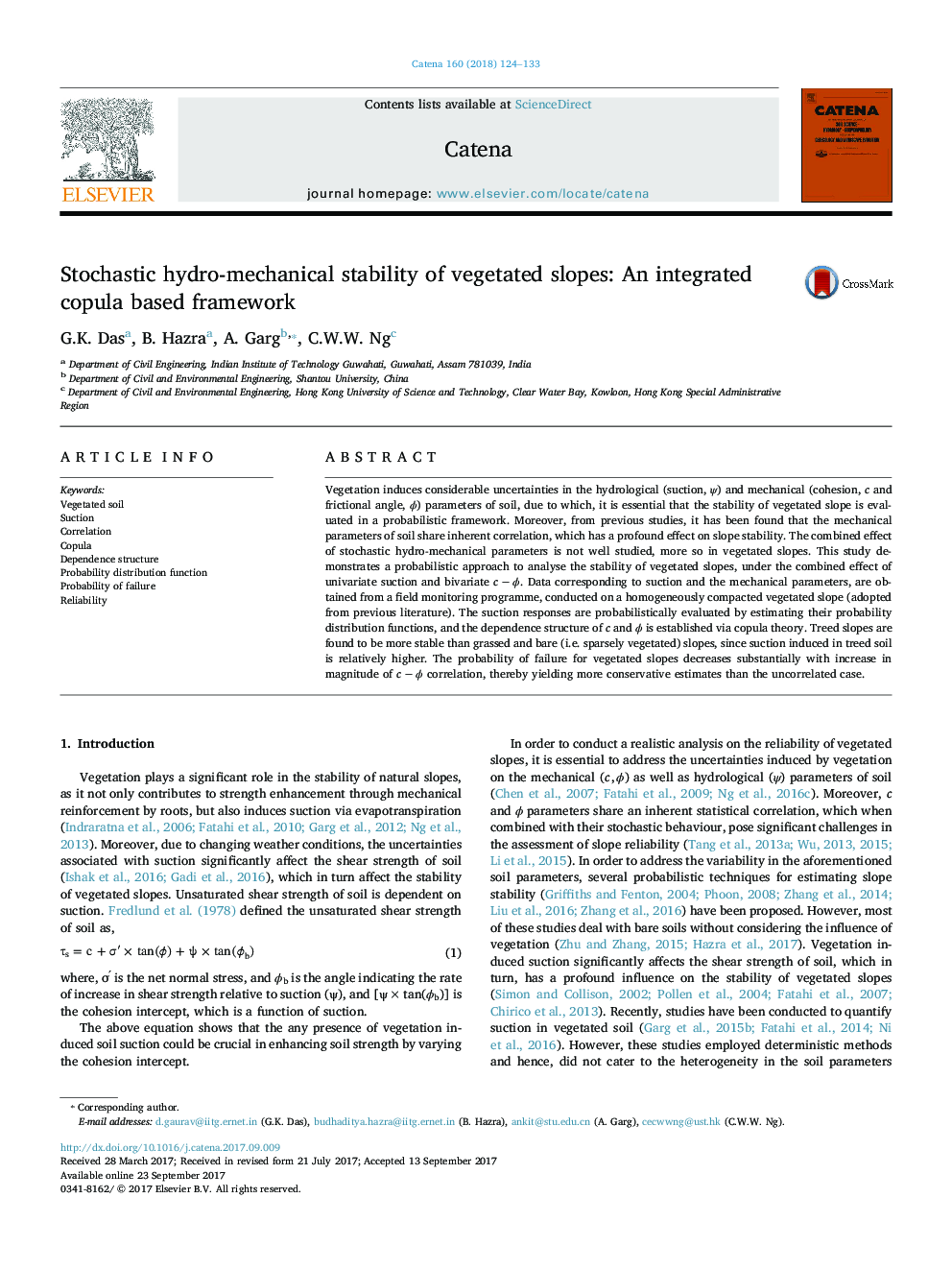| Article ID | Journal | Published Year | Pages | File Type |
|---|---|---|---|---|
| 5770033 | CATENA | 2018 | 10 Pages |
â¢Probabilistic approach to analyse the stability of vegetated slopesâ¢Utilizes combined effect of univariate suction and bivariate c âÂ Ï in stability analysisâ¢Dependence structure of c and Ï is established via copula theoryâ¢Probability of failure for vegetated slopes is inversely proportional to c âÂ Ï correlation
Vegetation induces considerable uncertainties in the hydrological (suction, Ï) and mechanical (cohesion, c and frictional angle, Ï) parameters of soil, due to which, it is essential that the stability of vegetated slope is evaluated in a probabilistic framework. Moreover, from previous studies, it has been found that the mechanical parameters of soil share inherent correlation, which has a profound effect on slope stability. The combined effect of stochastic hydro-mechanical parameters is not well studied, more so in vegetated slopes. This study demonstrates a probabilistic approach to analyse the stability of vegetated slopes, under the combined effect of univariate suction and bivariate c â Ï. Data corresponding to suction and the mechanical parameters, are obtained from a field monitoring programme, conducted on a homogeneously compacted vegetated slope (adopted from previous literature). The suction responses are probabilistically evaluated by estimating their probability distribution functions, and the dependence structure of c and Ï is established via copula theory. Treed slopes are found to be more stable than grassed and bare (i.e. sparsely vegetated) slopes, since suction induced in treed soil is relatively higher. The probability of failure for vegetated slopes decreases substantially with increase in magnitude of c âÂ Ï correlation, thereby yielding more conservative estimates than the uncorrelated case.
